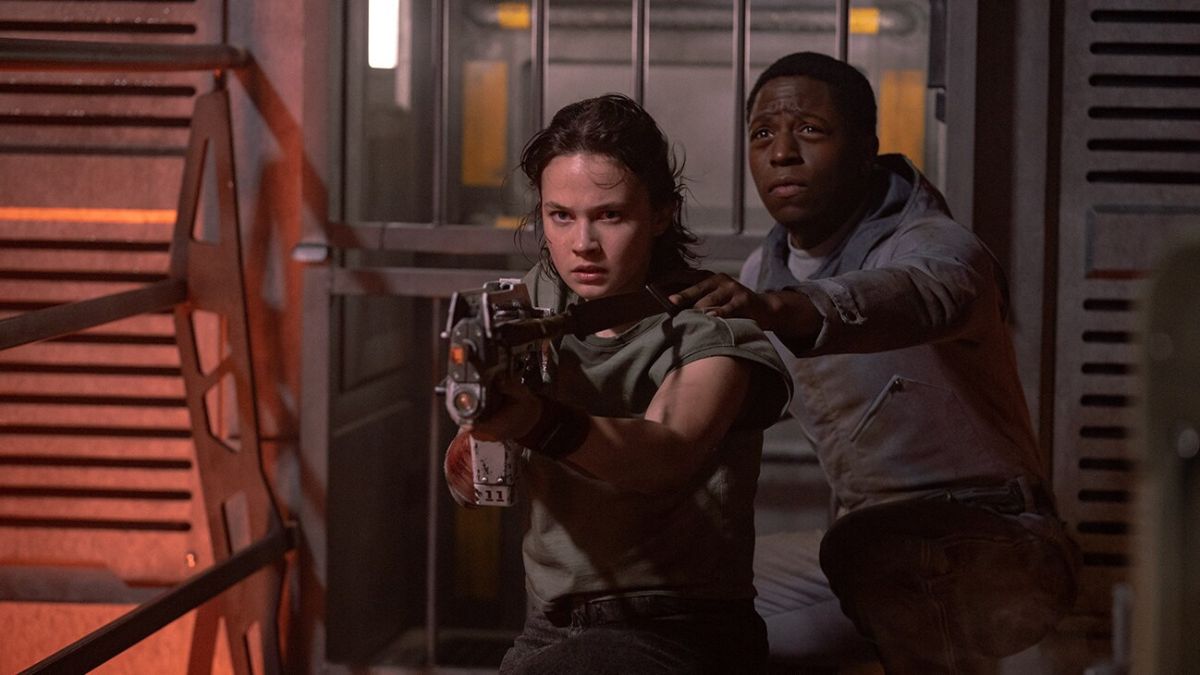‘Alien: Romulus’s secret ingredient makes it better than 90% of summer blockbusters
Long live practical effects!

The Alien saga is so back, and based on early reviews, director Fede Álvarez’s Alien: Romulus is shaping up to be one of the best horrors of 2024—and I think I know why.
From its iconic soundtrack to a career-defining performance from Sigourney Weaver, Ridley Scott’s 1979 sci-fi/horror classic Alien has cemented itself as a staple of pop culture, and deservedly so. Since then, we’ve witnessed the Alien universe branch into full-on franchise territory with spinoffs like Aliens, Prometheus, and yes, even the ill-fated Alien vs. Predator: Requiem. Don’t come for me, please.
From what we’ve seen so far, it seems like Alien: Romulus might just tower above the rest. Ahead of its August 16 premiere, the sequel-prequel is garnering overwhelmingly positive reviews from critics, who have praised its claustrophobic, nightmarish aesthetic and nods to past Alien entires. At the time of writing, the movie sits at a 82% Tomatometer score on Rotten Tomatoes based on 145 reviews, giving us a taste of what might just be the most commercially successful Alien outing yet.
If Alien: Romulus ends up being a hit with audiences, then Fede Álvarez might really be onto something when he says the masses prefer practical effects over CGI Xenomorphs and Facehuggers.
Practical effects are a crucial part of Alien‘s enduring legacy
Speaking with The Hollywood Reporter, Álvarez spoke on bringing his worst nightmares to life in Alien: Romulus—and why practical effects were absolutely essential to do so. “The audience that loves these movies, they really prefer to see the practical effects,” he said, adding, “they really want to see something that feels real, that feels grounded, so we went above and beyond in really a hard way because it’s so difficult.”
Even if it’s easier to “shoot an empty space and get some CG creature later on,” as Álvarez put it, creating actual, life-sized Xenomorph animatronics and Facehuggers was a huge priority for him, blending the “philosophy of the old movies” with “technology of today.” And thankfully, his efforts seem to have paid off, because fans are nothing short of thrilled to see these iconic beasts come to life in Alien: Romulus.
Director of Photography Galo Olivares also noted that the film’s use of real sets in place of green screens signals a “return to form” for the Alien franchise, which, like many of its ’70s and ’80s predecessors, relied heavily on things like puppets, miniature models, pull cables, reverse filming, and painted backgrounds to bring a scene to life—think George Lucas’ OG Star Wars trilogy or The Thing.
Sci-fi and horror are probably the top two genres that use practical effects, meaning its a kind of symbolic tribute for Alien: Romulus to integrate some of these classic techniques. Still, it’s important to note that even if the monsters here are animatronics and the sets are real, there’s probably a lot of CGI going on behind the scenes—and that’s hardly a bad thing, despite what some CGI naysayers might think.
CGI … bad?
Honestly, I think a lot of the discourse surrounding CGI and its place in Hollywood productions is a bit misinformed, and it could just be a side effect of moviegoers’ mounting frustrations with the Marvel Cinematic Universe and the superhero genre as a whole.
What people don’t always understand is that CG isn’t exclusively used for elaborate backdrops, Marvel-esque action sequences, and giant alien creatures that require actors to essentially use tennis balls as scene partners. However, it does save a lot of time and money—but at a different kind of cost. CG houses are severely overworked and underpaid.
3D modeling can be especially powerful when it comes to, say, making Emma D’Arcy ride a dragon in House of the Dragon, but there are far more subtle ways VFX departments use this technology to enhance a scene. Think Walton Goggins’ nose being edited out in the Fallout show, for one. CGI can also be used to fill out backdrops with period-appropriate scenery and buildings in dramas like Bridgerton, or to add additional textures to a shot. Obviously, this gets complicated when you factor in more recent conversations about AI, but that’s a conversation for another day.
Ultimately, CGI isn’t this inherently evil tool, but it’s refreshing to see a big-budget blockbuster like Alien: Romulus pay tribute to its roots by prioritizing the use of practical effects. You can’t deny that it gives a movie a certain flare and realism that so many movies today are devoid of: lifeless, CG-laden backgrounds and drab color pallets that make it painfully obvious that it’s being filmed in a warehouse somewhere in Georgia. With this in mind, it’s no wonder that movies like Barbie and Top Gun: Maverick were such box office triumphs—give us all the practical effects!
Have a tip we should know? [email protected]